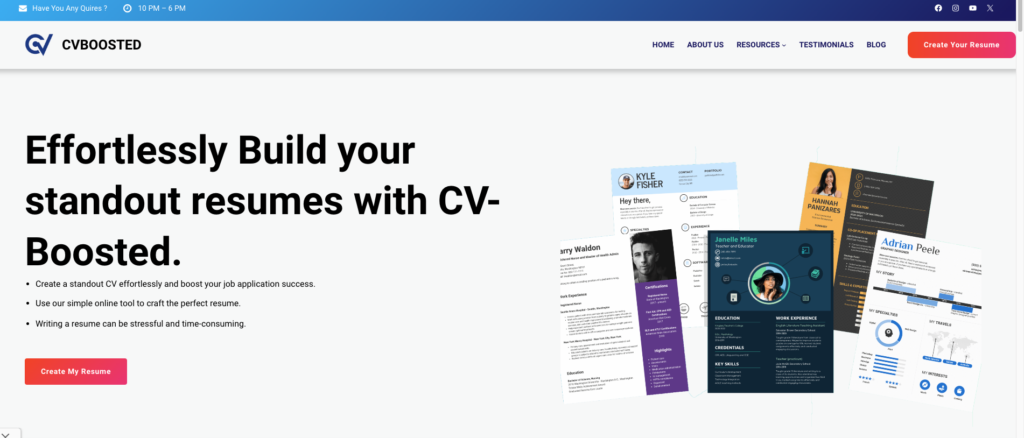
In today’s competitive job market, your resume is more than just a document—it’s your golden ticket to new career opportunities. Whether you’re a fresh graduate, a mid-career professional, or a seasoned expert, having a well-optimized resume can make all the difference in securing your dream job. This comprehensive guide will walk you through everything you need to know about crafting a standout resume that not only captures recruiters’ attention but also helps you land interviews faster.
Why a Well-Crafted Resume Matters
Your resume serves as the first impression for potential employers. With hiring managers spending an average of just 6–7 seconds scanning each resume, you need to ensure that yours stands out instantly. A strong resume:
- Highlights your key skills and achievements
- Demonstrates your professional growth
- Aligns with the job requirements
- Passes through Applicant Tracking Systems (ATS)
The Power of First Impressions
A professionally designed resume doesn’t just get you noticed—it increases your chances of being called for an interview by 40%. If your resume looks cluttered, outdated, or unorganized, hiring managers might dismiss it without a second glance.
A high-impact resume follows a clear and strategic structure. Below are the key components:
1. Header and Contact Information
Your header should include:
- Full name
- Professional email address
- Phone number
- LinkedIn profile (optional but recommended)
- Personal website or portfolio (if applicable)
2. Professional Summary or Objective
This section should be a concise, 2–4 sentence summary that highlights your experience, key skills, and career goals. Example:
“Results-driven marketing specialist with 5+ years of experience in digital marketing, SEO, and brand management. Proven track record of increasing engagement and sales through data-driven strategies. Seeking a role to drive innovative marketing campaigns in a dynamic environment.”
3. Key Skills and Competencies
Recruiters often scan for relevant skills, so list them prominently. Example:
- Project management
- Search engine optimization (SEO)
- Graphic design (Adobe Photoshop, Canva)
- Data analysis (Google Analytics, Excel)
- Social media marketing
4. Work Experience
For each job, list:
- Job title
- Company name
- Dates of employment
- Key responsibilities and achievements (use bullet points)
Example:
Digital Marketing Manager
XYZ Company | Jan 2020 – Present
- Increased website traffic by 50% through SEO and content marketing strategies
- Managed a team of 5 marketers and executed PPC campaigns with 30% higher conversion rates
- Developed email marketing campaigns, boosting engagement by 45%
5. Education
Include:
- Degree obtained
- Institution name
- Graduation year (optional for experienced professionals)
Example: Bachelor of Business Administration (BBA), Marketing
University of XYZ | 2018
6. Certifications and Training (Optional but Recommended)
Showcase relevant certifications such as:
- Google Analytics Certification
- PMP (Project Management Professional)
- HubSpot Content Marketing Certification
7. Additional Sections (If Applicable)
Depending on your industry, you may include:
- Volunteer Experience
- Publications
- Awards and Achievements
- Languages Spoken

Leave a Reply